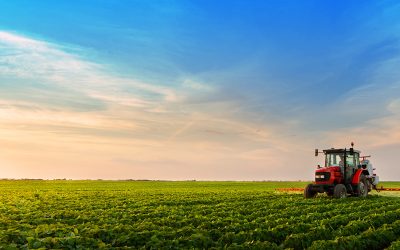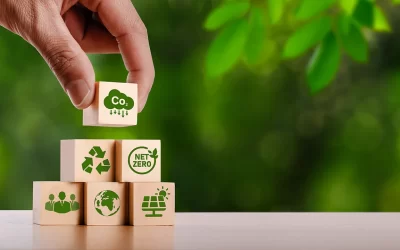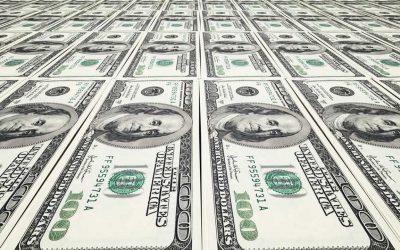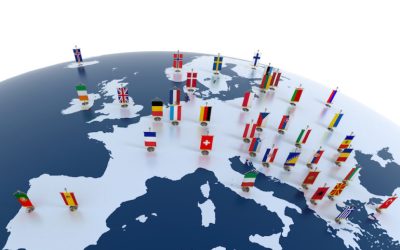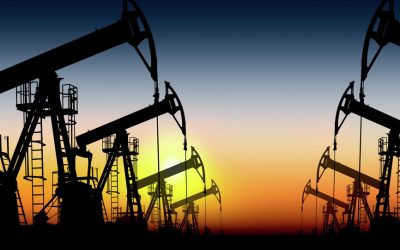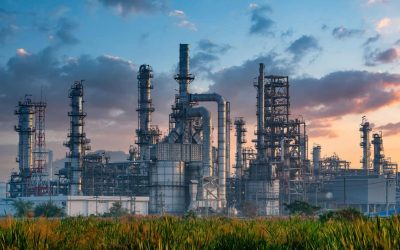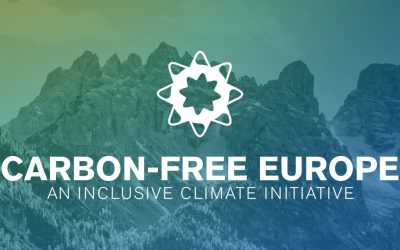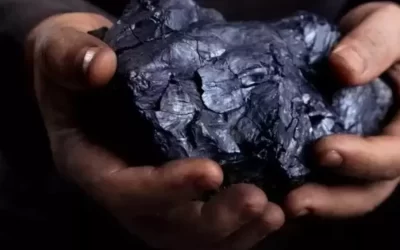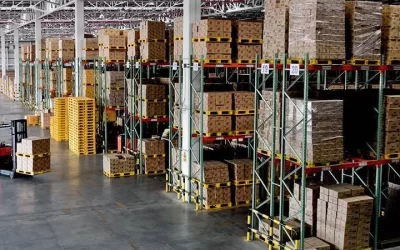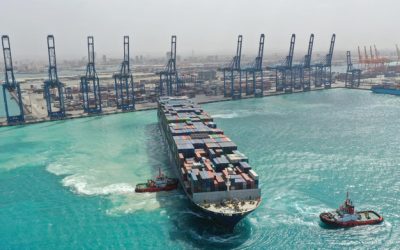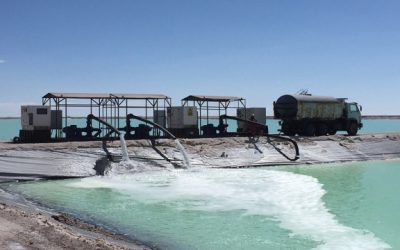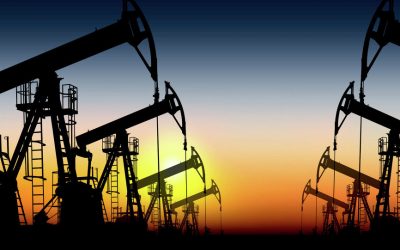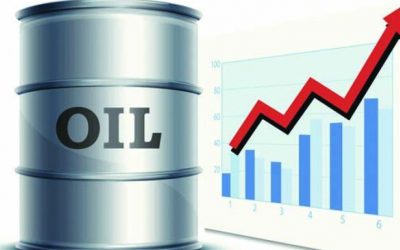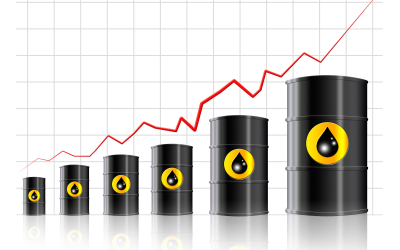10/12/2025
High-Altitude Wind Power: Unlocking an Untapped Layer of the Energy Transition
At a time when energy systems face unprecedented pressure to deliver resilience, flexibility, and cost-competitiveness, a new frontier is emerging several hundred metres above ground. High-altitude wind power (HAWP), the generation of electricity using tethered flying systems such as kites or autonomous gliders, is moving from experimental curiosity to a credible component of tomorrow’s energy mix.
This technological shift is driven by a simple atmospheric truth: winds become significantly stronger and more stable with altitude. Unlike surface-level flows, which fluctuate and often stall in calm conditions, high-altitude winds maintain a near-constant velocity and direction. Because the energy contained in the wind is proportional to the cube of its speed, even a modest increase in altitude can multiply the power output severalfold.
For investors and policymakers seeking scalable, low-impact, and cost-efficient renewable solutions, the implications are substantial.
Why High Altitude Matters
Across most regions of the world, winds at 300-500 metres can reach two to three times the speed of near-surface winds. This vertical gradient has long been documented by major meteorological agencies, but only recently has technology matured enough to harvest this resource safely and reliably.
While traditional wind turbines typically operate with a capacity factor between 30% and 50%, high-altitude systems can achieve 60% to 70%, thanks to the continuity and stability of upper-layer winds. Crucially, this is achieved with far fewer materials than conventional towers, substantially reducing capital expenditure and easing the environmental footprint associated with steel, concrete, and large-scale transport.
A Lightweight, Mobile, Low-Impact Technology
Unlike conventional turbines that require heavy foundations and significant logistical planning, HAWP devices are portable, rapidly deployable, and location-flexible. They can be installed in environments where traditional turbines are impractical like offshore platforms, mountainous terrain, remote islands, and areas affected by natural disasters.
They also present minimal visual and noise impact, a persistent challenge for onshore wind projects. Once airborne, modern tethered systems become nearly imperceptible, offering communities an alternative that avoids the landscape and acoustic concerns associated with large rotating blades.
How the Technology Works
Today, two main architectures dominate high-altitude wind development:
- Ground-Generation Systems (Kite Power)
This is the most advanced and commercially promising design. A large kite, often resembling a scaled-up paraglider, is tethered to a ground-based spool connected to an electric generator.
The kite follows a controlled, dynamic flight path, commonly a figure-eight pattern. As the wind pulls the kite away from the ground, the tether unspools under tension, driving the generator and producing electricity. When the kite reaches its maximum extension, it is reeled back using only a fraction of the energy generated typically 10-15%, keeping the net output strongly positive.
In November 2025, China successfully tested one of the world’s largest airborne kite systems: a 5,000 m² sail lifted to about 300 metres, alongside a smaller 1,200 m² prototype, a milestone that confirmed the scalability of the technology.
- Autonomous Aerial Vehicles (Airborne Gliders)
Here, a lightweight drone-like aircraft ascends to altitude and flies continuously in cross-wind patterns. Changes in tether tension drive a generator at ground level.
The key challenge remains the heaviness of onboard equipment, which adds complexity and energy demand. Nevertheless, prototypes continue to advance. The AP4 system, developed by Ampyx Power in collaboration with the Netherlands Aerospace Centre (NLR), is engineered to operate from offshore platforms and reach up to 450 metres.
Strategic Relevance for Investors and Decision-Makers
High-altitude wind aligns with the strategic priorities shaping global energy policy:
- Material efficiency: drastically lower steel and concrete requirements than traditional wind.
- Grid flexibility: high capacity factors increase system stability.
- Reduced permitting barriers: minimal land use and low visual impact simplify local acceptance.
- Compatibility with hybrid renewable installations: e.g., pairing with floating solar or offshore wind.
While HAWP is not yet a mass-market technology, its progression mirrors the early trajectory of offshore wind, a niche innovation that evolved into a multi-billion-dollar industry once technical and regulatory frameworks matured.
Given the strong resource potential, the falling cost of advanced materials, and the global urgency to diversify renewable portfolios, HAWP now sits at the intersection of innovation, climate policy, and long-term investment logic.
Sources
- Agence internationale de l’énergie. (2024). World Energy Outlook 2024. International Energy Agency.
- Agence internationale de l’énergie. (2025). World Energy Outlook 2025. International Energy Agency.
- Ampyx Power, & Netherlands Aerospace Centre. (2023–2025). Technical reports on AP3 and AP4 airborne wind energy systems. NLR.
- China Energy News. (2025, November). Public demonstration of large-scale airborne kite system in China. China Energy Publishing House.
- Commission européenne, Joint Research Centre. (2024). Energy technologies: Innovation and market deployment, High-altitude wind energy. Publications Office of the European Union.
- Delft University of Technology. (2023–2025). Kitepower technical notes and system evaluations. Delft University Press.
- ICAO (International Civil Aviation Organization). (2024). Standards for unmanned aircraft systems (UAS) in intermediate airspace. ICAO Publications.
- IRENA (International Renewable Energy Agency). (2023). Future of wind: Deployment, technology and impact. IRENA.
IRENA (International Renewable Energy Agency). (2024). Renewable power generation costs 2024. IRENA. - Météo-France. (2024). Structure verticale du vent: Données et analyses. Météo-France.
- National Oceanic and Atmospheric Administration. (2024). Wind power law and atmospheric dynamics. U.S. Department of Commerce.
- Organisation météorologique mondiale. (2024). Guide to meteorological instruments and methods of observation. World Meteorological Organization.
- Windpower Monthly. (2025, November). China tests 5,000 m² airborne wind kite at 300 metres altitude. Windpower Media Group.
Important Disclaimer: The content of this article is provided for informational and educational purposes only. It reflects the author’s opinion based on information available at the time of publication, which may become outdated. This content does not constitute personalized investment advice, a recommendation to buy or sell, and does not guarantee future performance. Markets carry a risk of capital loss. The investor is solely responsible for their decisions and should consult an independent professional advisor before any transaction. The publisher disclaims all liability for decisions made based on this information.
Global Market Outlook : July 2025, Part II
In the Realm of Signals: When Markets Whisper Before They Roar As July unfolds, global markets find themselves in a moment of suspension - not yet in crisis, not yet in recovery, but undeniably in motion. Economic indicators remain ambiguous, weather maps are more...
Harvests in the Balance : Global Agriculture in July 2025 and the Road to 2026
July dawns over the world’s farmlands with the scent of ripening wheat and the hum of heat building on the horizon. In the American Midwest, late June rains brought welcome moisture to parched soils, buying time for corn and soy. But relief is short-lived. Forecasts...
Threads of Transition: Polyester, Petroleum, and the Coming ESG Reckoning
In the shifting sands of global capitalism, the polyester fiber is quietly holding together a complex web of oil flows, investor sentiment, and climate ambition. It is synthetic, invisible to most, and ubiquitous - from a €30 Zara top to the orange rope tethering a...
RF & F Believes in ESG : Here’s Why It’s Our Future
Over the last decade, environmental, social and governance (ESG) factors have grown from a “nice‑to‑have” into the centerpiece of global finance. In 2020, ESG‑focused funds in Europe amassed €1.2 trillion (approx. $1.3 trillion / £1.0 trillion) - a 37.1% jump over...
Global Dollar Slides to Decade Lows
In the first half of 2025, the US dollar index plunged more than 10 %, marking its steepest decline since the early 1970s. Underpinning this drop are growing concerns over the independence of the Federal Reserve amid political pressure, sustained large fiscal...
“WOMEN FOR SUSTAINABLE WORLD” PROJECT Anatomy of a Programmed Vulnerability: How Deep-Rooted Instincts Still Shape Social Exclusion
Human history isn’t just built on laws and institutions - it’s shaped by primal reflexes and archetypes. Beneath the polished surface of modern democracies lurk age-old behaviors: the exclusion of the weak, suspicion of the unfamiliar, and silent punishment of...
Wall Street Eyes Regulatory Easing: What It Could Mean for the Summer IPO Market
A quiet but significant shift may be underway on Wall Street. According to Reuters, the U.S. Securities and Exchange Commission (SEC), NASDAQ, and the New York Stock Exchange (NYSE) have been holding ongoing talks about reducing regulatory burdens for public...
Oil and Gas Futures: A Smart Investor’s Guide to Profiting from Energy Price Swings
As geopolitical tensions flare - most recently in the Middle East - oil and gas prices often react within hours. On the night of June 12th, following initial military strikes between Israel and Iran, crude oil surged 13% before paring gains to 7% by morning. Such...
“WOMEN FOR SUSTAINABLE WORLD” PROJECT Europe’s Unfinished Unity
The café terrace in Brussels’ European Quarter hums with a dozen languages - Spanish, Dutch, Finnish - but when the Polish economist at Table 12 speaks, the German consultants subtly check their watches. Later, they’ll praise her "excellent English" while forwarding...
Markets in Mid-2025: Pause, Rotate, or Reprice?
As the second half of June unfolds, global equity markets sit at a delicate inflection point. The S&P 500 recently pierced the symbolic 6,000 mark, up over 12% year-to-date, buoyed by resilient tech earnings, AI-driven optimism, and receding fears of an immediate...
The Bond Market’s Balancing Act: Beyond Rumors, Rooted in Reality
Imagine the global government bond market as the world’s giant, ultra-safe savings jar - home to more than $80 trillion in outstanding debt, stretching across U.S. Treasuries, Eurozone debuts, UK gilts, Japan’s JGBs, and others. It’s a stage where big economic forces...
The Investment Case. Mastercard in 2025: Enduring Power or Waning Momentum?
As of mid-2025, Mastercard Inc. remains a towering figure in global finance - an emblem of technological precision, transactional scale, and strategic foresight. Yet beneath the surface of its glowing financials, a more nuanced question emerges: are investors buying...
“WOMEN FOR SUSTAINABLE WORLD” PROJECT Combating Corruption: A Moral Imperative to Protect the Most Vulnerable and Safeguard Europe’s Future
In Honour of Stefan Zweig In a Europe beset by geopolitical tensions, widening social fractures, and the existential urgency of climate change, corruption emerges as a silent poison - corroding the foundations of democracy from within. Far from being confined to...
The Investor’s Paradox: Must One Be an Optimist to Take the Leap?
In the uneasy rhythm of the financial world, one quiet question persists: is optimism essential to investing? Or is it merely a comforting illusion - useful in calm waters, dangerous in storms? At first glance, the answer seems obvious. The very act of investment...
Global Market Outlook: May 26-30, 2025 : A Delicate Equilibrium
As we enter the final week of May 2025, financial markets navigate a precarious balance between competing economic forces. This pivotal period will test investor strategies amid shifting fundamentals, with several key developments poised to shape near-term...
The True Price of Cheap Flights: What Fuels Low-Cost Airlines in 2025
By the time summer paints its skies in shades of wanderlust, millions across the globe will board planes not for luxury, but for liberty - the freedom to travel farther, more frequently, and more affordably than ever before. Low-cost airlines, once a niche novelty,...
“WOMEN FOR SUSTAINABLE WORLD” PROJECT The Silent Language of Displacement
The border guard’s pen hovers over the form, its hesitation more telling than any stamp could be. Across the desk, the asylum seeker sits perfectly still - back straight, eyes lowered, hands folded in lap. In his country, this posture speaks of deference. Here, it...
AI and the Commodities Markets: A New Era of Intelligence and Influence
In the world of commodities - where fortunes have always hinged on weather, war, and speculation - a new force is rewriting the rules: artificial intelligence. Unlike previous cycles of innovation, AI doesn’t merely improve existing processes - it redefines what’s...
Market Outlook: How US-China Tariffs, Iran Talks, and Oil Dynamics Will Shape Trading (May 12 – 26, 2025)
Key Drivers for the Next Two Weeks The financial markets are entering a period of heightened sensitivity to geopolitical and macroeconomic developments. The US-China tariff agreement, US-Iran nuclear negotiations, and shifting oil supply dynamics will...
RM&F Forecast : Heavy Industry in H2 2025: Navigating the Policy Tightrope
As we enter the second half of 2025, heavy industry stands at a critical juncture, caught between conflicting forces of decarbonization mandates and geopolitical realignment. The sector's performance will hinge on three key factors: the pace of energy transition...
“WOMEN FOR SUSTAINABLE WORLD” PROJECT Single Mothers in Europe: A Political Emergency, A Civilisational Duty
The Silence of a Social Europe Before Ordinary Heroism Within the grand narrative of Europe’s social project, certain voices remain eerily absent. Among them: the voices of those women - solitary yet steadfast - whom one glimpses in the hush of early mornings on...
Carbon Trading: How Emissions Quotas Work and Why They Matter
As climate change accelerates, nations worldwide are turning to market-based solutions to curb greenhouse gas emissions. Among the most prominent tools are carbon emissions trading systems (ETS), which set limits on pollution and allow companies to buy and sell...
“WOMEN FOR SUSTAINABLE WORLD” PROJECT Reforming Economic Systems to Support Women and Mothers: A Policy Imperative for Sustainable Growth
The Economic Marginalization of Women Contemporary economic systems continue to impose disproportionate burdens on women - particularly mothers and single parents - through policies and corporate practices that effectively penalize workforce participation while...
The Twilight of Precious Metals: A 2025 Odyssey
As the world stumbles into 2025, precious metals stand as reluctant protagonists in an economic drama they did not choose. Gold, silver, platinum and palladium are no longer mere commodities - they have become Rorschach tests for our collective anxieties about...
The Twilight of King Coal: A Decline That Spares No One
Coal, the aging monarch of global energy, still sits upon its throne - but the seat trembles beneath it. Prices struggle to recover, buyers grow scarce, and producers clench their teeth. Despite the desperate needs of emerging economies, the world market moves in slow...
The Twilight of Instant Gratification: Dark Stores in the Age of Reckoning
The neon mopeds still dart through midnight streets, their cargoes of groceries and gadgets tracing ephemeral arcs across the urban landscape. But behind this façade of seamless convenience, a quiet metamorphosis is underway in the unmarked warehouses powering our...
Market Storms: The Invisible Hand or the Iron Fist?
Financial markets are a complex interplay of supply, demand, and sentiment - but beneath the surface, two titanic forces wage a silent war. On one side, the fundamental laws of economics: production, consumption, and scarcity. On the other, the unpredictable maneuvers...
The New Gold Rush: How Space Resources Will Shape the Next Century
As dawn breaks over the Cape Canaveral launch pads, a new era of exploration is taking shape - not toward uncharted continents, but into the vast, untapped frontier of space. The 21st century’s great powers are no longer racing merely for geopolitical dominance on...
China Launches First Cross-Regional Hydrogen Truck Highway
China has opened its first long-distance hydrogen trucking route, a 1,150-kilometer highway linking key industrial zones, in a move that underscores the country’s ambitions to dominate the emerging hydrogen economy. State-owned energy giant Sinopec (China...
Oil Markets in Limbo: Geopolitics and Demand Concerns Keep Prices Rangebound
Oil futures remain stuck in a holding pattern, with Brent crude continuing to trade within a tight $63 - 66 per barrel range. The market is caught between short-term supportive factors and longer-term demand anxieties, leaving traders hesitant to commit to a decisive...
The High Seas Bargain: IMO’s Carbon Pricing Deal and the Cost of Cleaning Up Shipping
The world’s shipping lanes, arteries of global commerce, have long operated beyond the reach of carbon regulation. That era is ending. On April 11, the International Maritime Organization’s (IMO) Marine Environment Protection Committee brokered a watershed compromise:...
Global Chip Market Soars to $627 Billion, but Trade Tensions Cloud the Horizon
The semiconductor industry, the engine behind everything from smartphones to AI, is booming. In 2024, the global microchip market expanded by 19%, reaching 627 billion (Deloitte). Growth is expected to continue with forecasts predicting an 11.2627...
Lithium’s Thirst Problem: Can Technology Save the Andean Water Crisis?
As EV demand skyrockets, the arid Lithium Triangle faces ecological collapse - while startups bet on waterless extraction to rewrite the rules. High in the Andes, where the world’s richest lithium deposits lie beneath sunbaked salt flats, a paradox threatens the green...
OPEC+ Accelerates Production Increase
In a notable policy shift, OPEC+ has opted to raise oil output by 411 thousand barrels per day (kb/d) in May, significantly exceeding the previously anticipated 135 kb/d adjustment. This decision effectively fast-tracks the implementation of July’s production quotas,...
Finland Commences Shutdown of Its Last Operational Coal-Fired Power Plant on April 1st
In 2019, the Finnish government enacted legislation to phase out coal usage by 2029. Since then, the country has witnessed a substantial expansion in renewable energy capacity, particularly in wind and solar power, significantly reducing nationwide coal dependence. To...
The Mindset of Millionaires
The Mindset of Millionaires: Timeless Principles for Building & Preserving Wealth True financial success is not merely the result of fortunate deals - it is the product of a disciplined, strategic mindset. While luck may play a role, the world’s wealthiest...
Brent’s Ascent: How Diminishing American Reserves and the Iranian Quagmire Are Rewriting Oil’s Ledger
Brent crude futures reached their projected growth target yesterday, supported by the latest EIA data showing a significant weekly decline in US oil stockpiles. These figures aligned with earlier statistics released by API. The reduction in inventories follows the...
Nuclear Energy: A Complex Interplay of Promise and Challenge
Within the broader discourse on energy transition, nuclear power occupies a uniquely contested position - simultaneously hailed for its low-carbon potential and scrutinized for its inherent risks. Emerging during the Cold War era, this technology continues to provoke...
Oil
Brent crude futures opted for an upward trajectory yesterday, successfully breaching a downward resistance line that had persisted since mid-January. This breakthrough creates potential for further movement toward the next target range of 74.10 - 74.27 per barrel. The...
Chemin cahoteux pour les traders jusqu’à présent
Perspectives pour les prochains mois à travers les différents marchés : Marchés Américains Actions (S&P 500, NASDAQ, Russell 2000) : Les indices américains (S&P 500, NASDAQ et Russell 2000) ont récemment montré des signes de faiblesse, avec une...


